Reflector vs Refractor Telescope: Which is Better?
Last Updated on
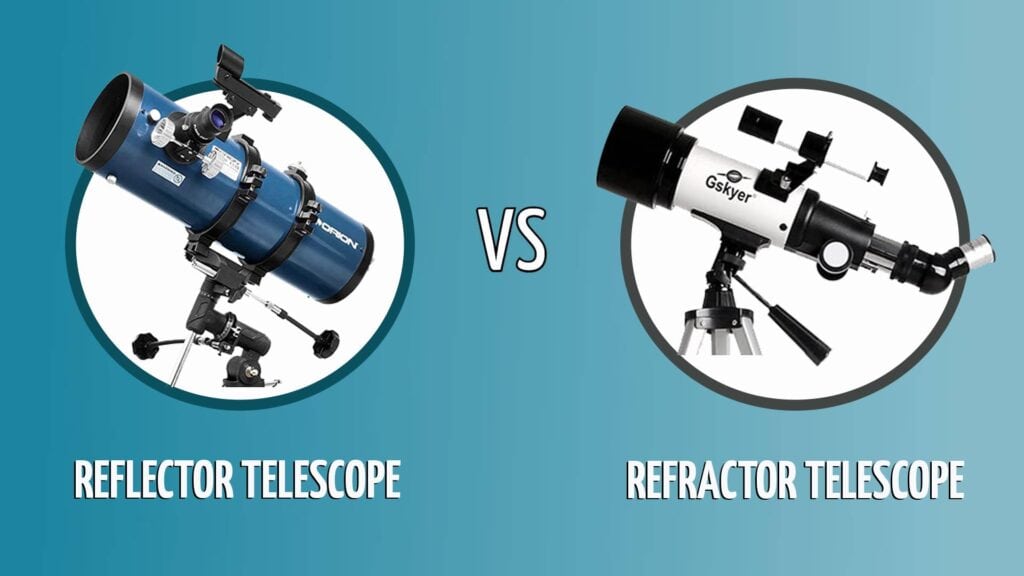
If you’re just getting into astronomy, the sheer amount of technical information you need to understand can be overwhelming. Just trying to determine which telescope to buy can seem like a complex puzzle. Reflectors, refractors, and even Schmidt-Cassegrain all seem similar, so how can you choose between them?
Though they seem similar on the surface, these telescopes have some notable differences that will make the decision easier once you understand them. To help you, we’ve compiled all the necessary information about these telescopes so that you can get a better understanding of what they are, how they work, and which one will suit you best.
Visual Difference
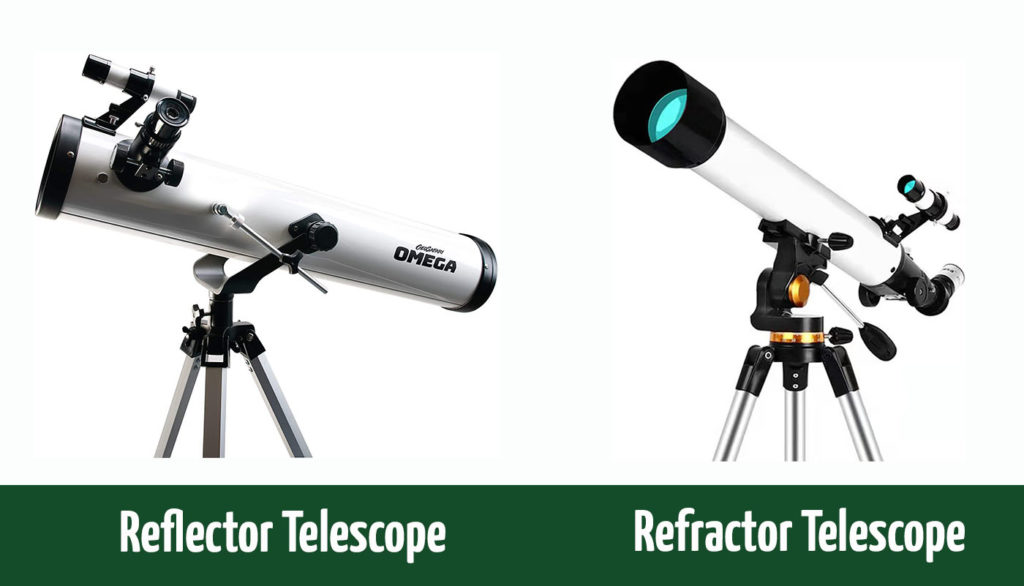
Reflector Telescope Overview
The first reflecting telescope was built way back in 1668 by none other than Isaac Newton. We still use a similar version of a reflector telescope today because they are very cheap to build and produce. Because of this, these telescopes heavily populate the entry-level market.
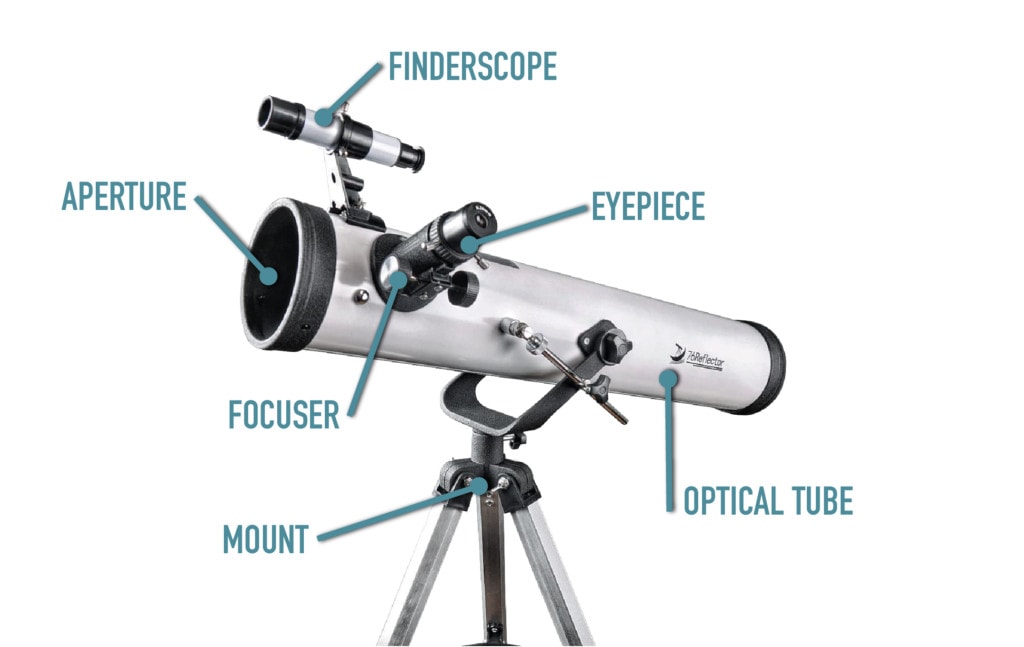
But that does not mean that they’re not good. These telescopes are excellent tools and can provide a detailed view of distant heavenly bodies. Don’t discount them because the design is old and they can be built cheaply. This design is still in use because it is so effective.
How Does It Work?
As the name implies, reflector telescopes reflect the image using a series of mirrors. The main mirror, called the primary mirror, sits at the very back of the telescope. Light comes in through the front of the optical tube and shines down until the primary mirror reflects it forward from the back.
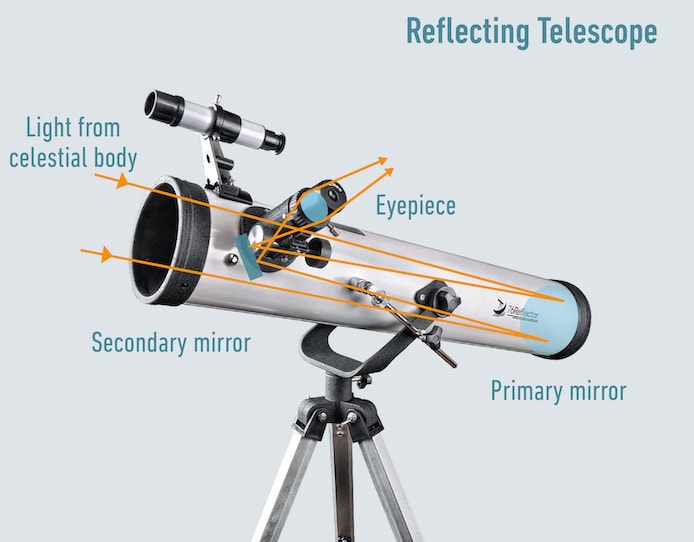
At this point, the light is headed straight back out the front of the telescope. To capture it, another mirror is placed inside the device. This mirror is facing back towards the primary mirror and it reflects the light to an eyepiece that’s located somewhere towards the front of the telescope.
The front-placed eyepiece is one of the defining characteristics of a reflector telescope and makes it easy to tell them apart from other types of telescopes at a glance.
Applications
Reflector telescopes are great when you need the maximum amount of light in your image. If you’re not able to get enough light from the celestial bodies you’re viewing for a clear image, the large mirrors of a reflector telescope might reflect enough light to allow for improved viewing.
These are also the best choice for many beginning astronomers. Some telescopes can be wildly expensive, but since reflector telescopes are much cheaper to make than most other types, they’re often quite affordable and make a good starting point.
Lens & Mirrors
Reflector telescopes use two mirrors and an eyepiece. But those mirrors need to be aligned with each other each time you use the telescope in a process called collimation. If you skip this, you might not get a clear or sharp image.
Also, the optical tube of a reflector telescope is wide open. This means that dust, dirt, and other contaminants can easily get inside, so you will have to continually clean the mirrors and optical tubes.
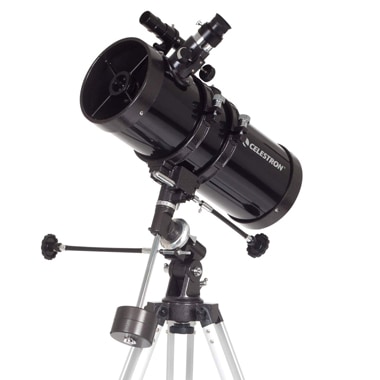
On the bright side, because nothing is hindering the light and the reflector telescope uses a large primary mirror, they let in more light than other types of telescopes, allowing for viewing in less-than-ideal conditions.
For a perfect image, you’d need a hyperbolic primary mirror in a reflector telescope. But these are expensive, so only the highest-quality telescopes employ them. Most will use a cheaper parabolic mirror or the cheapest spherical mirror instead. While these can make more affordable telescopes, they also have lower optical quality and can introduce coma aberration and other image-degrading effects.
Magnification
In a reflector telescope, magnification is taken care of by the eyepiece. This enables you to purchase additional eyepieces with varying degrees of magnification. Then, you can easily and quickly swap them out to change your view.
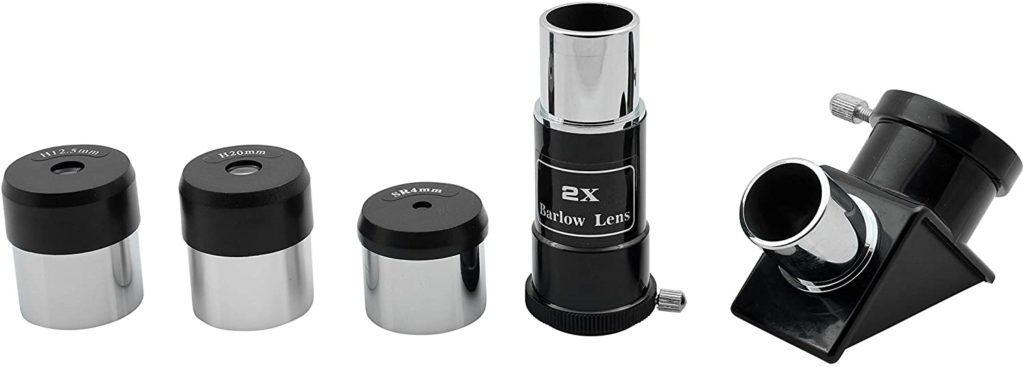
Many reflector telescopes will include one or more eyepieces, generally offering magnification levels between 40x and 200x. But they’re often capable of magnification levels of 500x or more, so you can upgrade the eyepieces and get an even more detailed view of the heavens.
Focal Length
In a reflector telescope, the focal length is the distance from the primary mirror to the secondary mirror where the image is focused and sent to your eye. This means that the telescope is longer than the focal length by a fair amount.
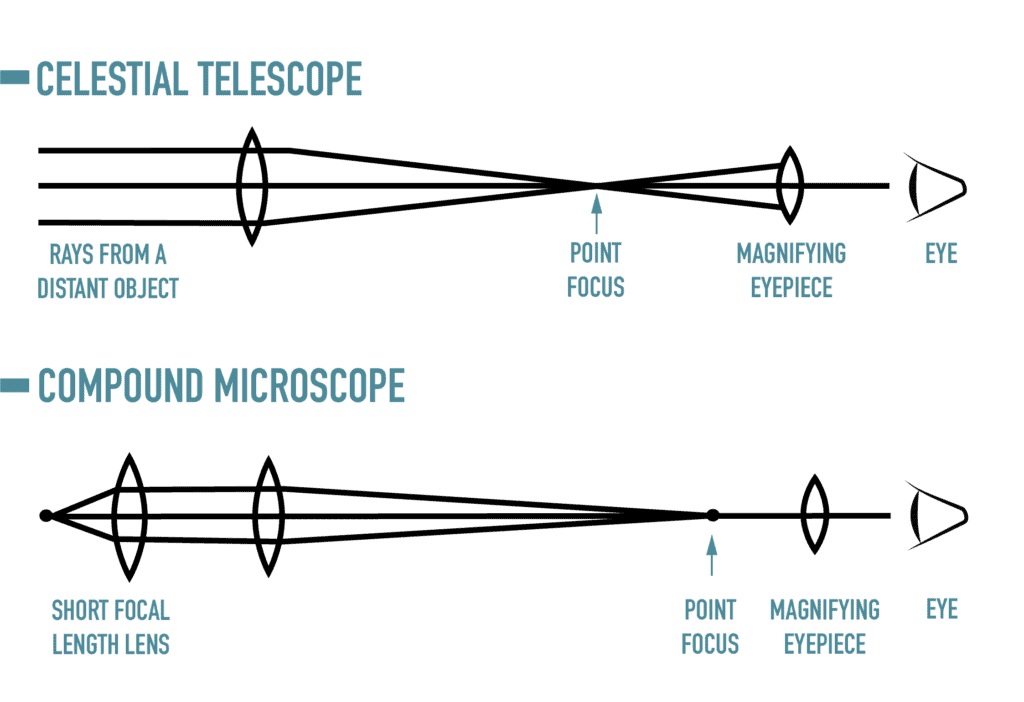
Remember, a smaller focal length gives a wider field of view allowing you to see more of the heavens but at less magnification. A longer focal length will let you see a more detailed close-up of a smaller area.
Eyepiece
The eyepiece is where you look into your telescope to see an image. But you don’t press your eye right up to it. Instead, you’ll hold your head a short distance behind the eyepiece so you can see the entire image and get it all in focus. This distance is referred to as eye relief.
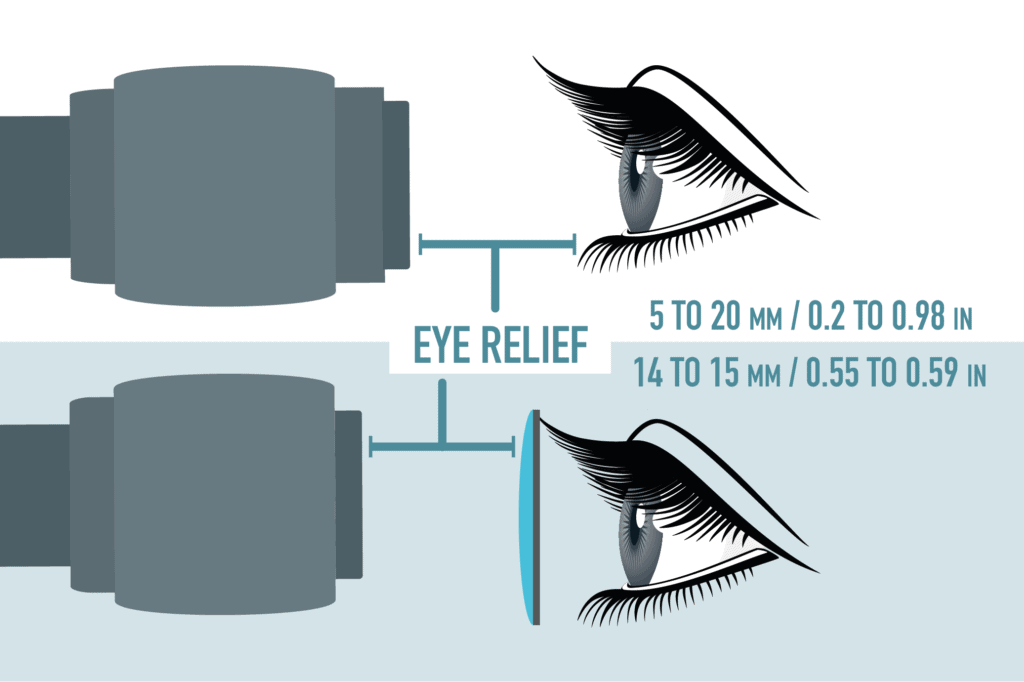
The exit pupil is the small circle through which all of the light passes to give you an image. The exit pupil must be smaller than your pupil. If your pupil is smaller than the exit pupil of the telescope, you’ll only be seeing a portion of the telescope’s total aperture. If your pupil is larger than the exit pupil of the eyepiece, you’ll be able to take in the entire image.
Thankfully, the eyepieces on a reflector telescope are interchangeable. You’ll be able to change them out with eyepieces that work best for you. That could mean more magnification or less, a larger eye relief for those who wear glasses or a smaller exit pupil for those will smaller pupils.
Field of View
The field of view represents how much area you are seeing in your telescope’s image. A small field of view means you’re seeing a small area in more detail while a larger field of view means lower magnification but you’re seeing more area overall.
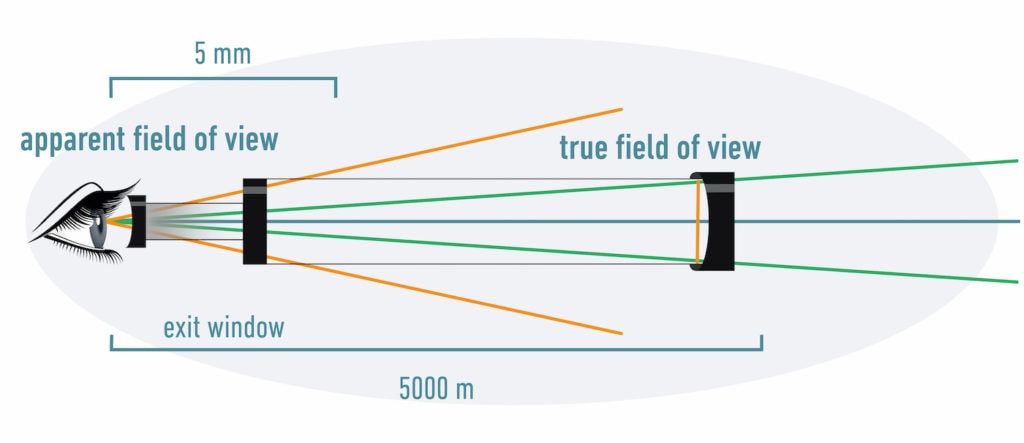
The focal length is directly tied to the field of view. A longer focal length means more magnification and a smaller field of view. On the other hand, telescopes with a shorter focal length have a large field of view but they’re not as magnified.
You can find reflector telescopes with varying fields of view. But within your telescope, you’ll be able to adjust the field of view somewhat by changing eyepieces.
Modifications
The number one upgrade or modification for reflector telescopes is the eyepieces. Yours may come with one or two eyepieces with different levels of magnification, but if you want more control over the image you’re seeing through your telescope, then you’ll want to add to your collection of eyepieces.
Additional eyepieces can give you more magnification options, different fields of view, and even a smaller or larger exit pupil if needed.
Pros & Cons of Reflector Telescopes
- Can be very affordable
- Interchangeable eyepieces allow for customization
- Large mirrors take in a lot of light
- The open design means mirrors need constant cleaning
- Mirrors require collimation every use
Refractor Telescope Overview
Refractor telescopes haven’t been around quite as long as reflectors. They’re a sealed design so they are less susceptible to dirt and debris. They also don’t need as much adjusting and never need collimation like a reflector telescope. Likewise, they’re smaller and more compact than reflector telescopes, making them a great choice for astronomy on-the-go.
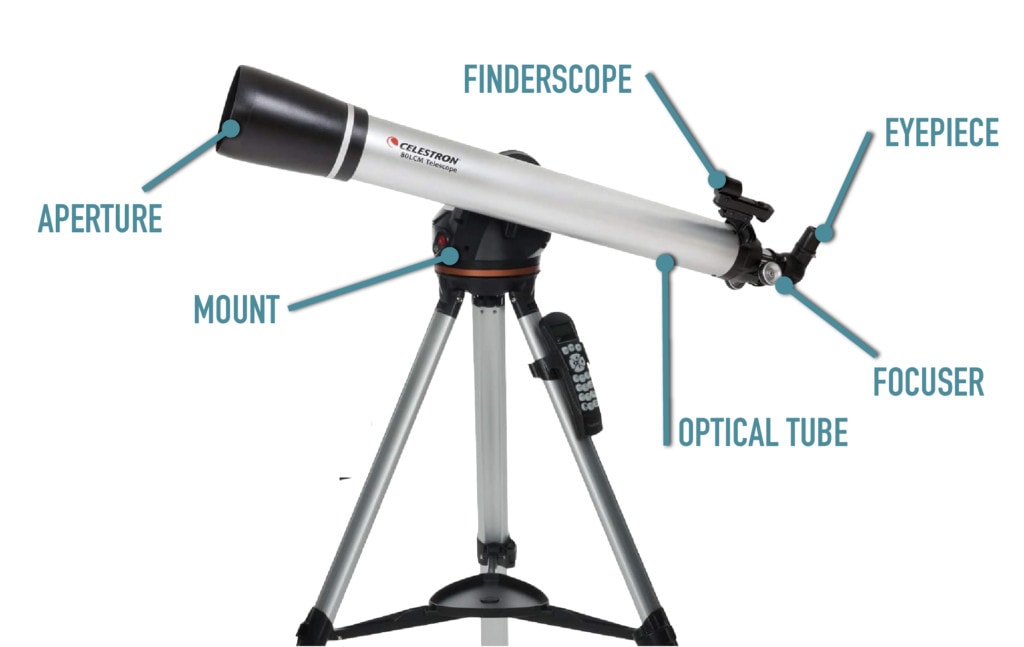
How Does It Work?
Refractor telescopes have a large lens on the very front. This lens is convex, taking in light and refracting or bending it into a smaller beam of light that gets sent back to another lens at the rear of the telescope.
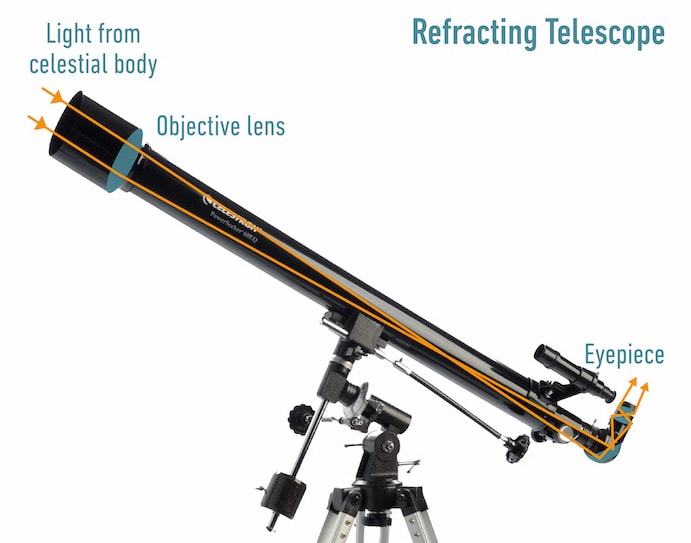
This lens, also convex but facing the other direction, takes the smaller beam of light and magnifies it so that you can get a large, clear image.
Applications
Refractor telescopes tend to be better at observing deep-sky objects. When you want to look past the moon and the nearby planets in our solar system, refractor telescopes make it possible.
Since they’re also smaller, they’re better for anyone who doesn’t always do their viewing from the same location.
Lens & Mirror
The refractor telescope uses two lenses as opposed to the two mirrors employed by a reflector telescope. These lenses refract light to provide you with an image; earning the name of refractor telescope.
But the problem is that not all the colors of light refract at the same rate. This means that the light colors are reaching the secondary lens at different rates, causing chromatic aberration. You’ll see this as fuzzy colors and colored rings around celestial bodies.
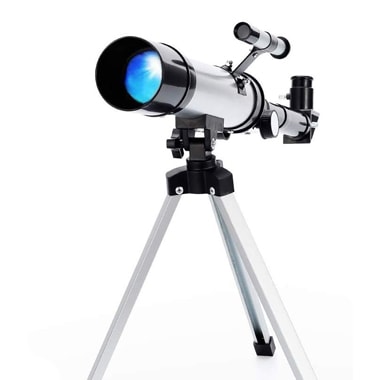
Special lenses have been made to combat this issue, but they can be extremely expensive. Luckily, it’s not as big of a deal on smaller-aperture telescopes like the ones most people purchase for home and hobby use.
Magnification
If you divide the focal length of your refracting telescope by the focal length of your eyepiece, you’ll get the magnification level of your telescope. But you can always change this by swapping out your eyepiece.
To get more magnification, you can either use a higher magnification eyepiece or get a telescope with a longer focal length. On average, most refractor telescopes feature magnification from 50x-500x, depending on the eyepiece. The specifications on a refractor are typically found on the focusing tube between the optical tube and the eyepiece.
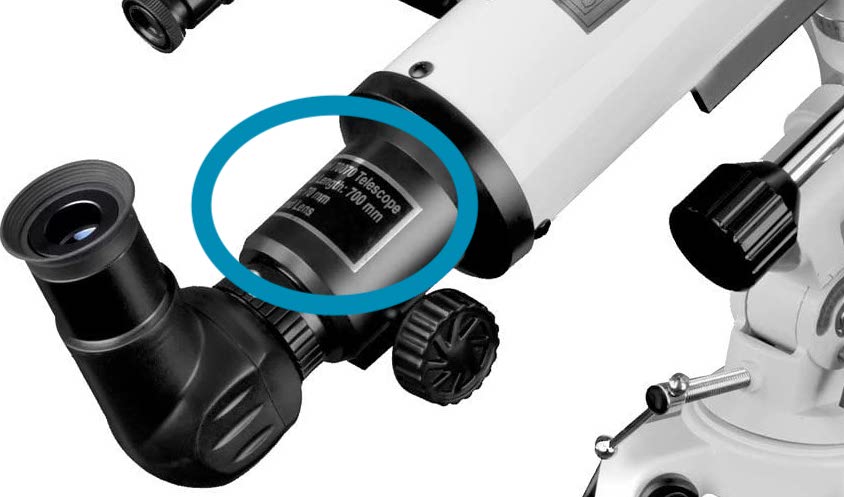
If you compare a reflector telescope and refractor telescope of a similar size, the refractor telescope will generally have more magnification. This is because of the way the telescopes are set up internally, allowing for a longer focal length in a smaller refractor telescope. Since a longer focal length means higher magnification, a refractor telescope will usually have higher magnification than a reflector telescope that’s the same size.
Focal Length
If you want to get a wider field of view, you’ll want a telescope with a shorter focal length. This will also make for a very compact telescope. But if you want a more detailed view of the celestial bodies you’re observing, then a longer focal length is a good bet. This will provide more magnification but will also result in a larger telescope overall. Still, you can have a smaller refractor telescope with more magnification than a reflector telescope that’s larger.
Eyepiece
The eyepiece on a refractor telescope is at the very rear of the device. This can change the way you view the telescope since you have to be behind it and likely seated in order to use it.

Though there’s not much difference in eye relief between reflector and refractor telescopes, there is a lot of difference between eyepieces. If you wear glasses, you’ll need to make sure you find an eyepiece with large enough eye relief for you to view comfortably without your glasses hitting the eyepiece.
Field of view
Between a reflector and a refractor telescope of the same size, a refractor telescope will generally have a longer focal length allowing for a more detailed and magnified image but a smaller field of view.
Modifications
Like with reflector telescopes, the most important modification to your refractor telescope is the eyepieces. Additional eyepieces can open up doors for you as you expand your view of the heavens.
You can also upgrade your tripod to one that smoothly moves and follows the trajectory of planetary orbit. If you really wanted to go all out, you could even upgrade to a computerized mount that’s able to locate and track celestial objects for you with the push of a button.
Pros & Cons of Refracting Telescopes
- Can be more compact
- Doesn’t need regular adjustments
- Very easy to use
- Chromatic aberration
- More expensive
What is a Catadiotropic (Schmidt-Cassegrain) Telescope?
Both reflector and refractor telescopes have their strengths and drawbacks. To get the best of both worlds, mirrors and lenses were combined in the Schmidt-Cassegrain telescope.

In this type of telescope, a primary mirror at the rear of the device reflects the light to a secondary mirror towards the front, exactly like a reflector telescope. But that’s where things diverge. The eyepiece is located at the back of the telescope, so the secondary mirror reflects the image all the way back to a lens at the eyepiece.
There are several advantages to this type of telescope. First, because the light is traveling so far, being reflected multiple times, the Schmidt-Cassegrain telescope has a very long focal length in a compact tube. That’s why these telescopes are favored for astrophotography.
Plus, it mainly uses cheap-to-produce mirrors instead of expensive lenses. This means you can avoid the chromatic aberration of many refractor telescopes and get high levels of magnification in a compact package thanks to the long focal length.
When to Use a Reflector
Reflectors are great for viewing large and close heavenly bodies like planets and other objects within our solar system. They’re also great starter telescopes because of how affordable they often are. But keep in mind, you’ll still need to collimate the mirrors and that can be a bit tricky until you get it figured out.
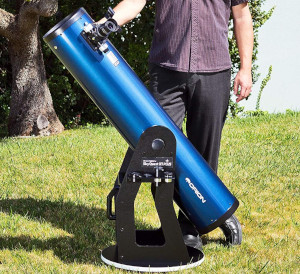
When to Use a Refractor
Refractors offer higher magnification in a more compact package. They’re the better choice for when you want to observe on the move and take your telescope with you. They also don’t need to be collimated and require less maintenance and cleaning, so they’re best if you just want to observe and don’t want to mess with the extra work.
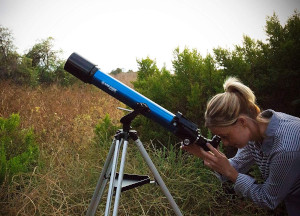
Special Considerations
Don’t forget the extra work that’s involved with a reflector telescope. You’ll have to collimate the mirrors every time you set it up. Plus, you’ll need to clean those mirrors because of the open-tube design. Refractors don’t have the same maintenance requirements.
Price
When you’re just getting started with astronomy and don’t know if you’re going to stick with it or not, you might be looking for the cheapest option to get you started. In that case, reflector telescopes are generally the way to go. Because they’re made with mirrors instead of lenses, they’re inexpensive to make and you can usually get a solid product very affordably.
Refractor telescopes tend to be more expensive. Moreover, the cheaper refractor telescopes are made with spherical lenses that have poor image quality and lots of chromatic aberration. You’ll need to spend a bit more to get a quality refractor telescope.
Reflector vs Refractor Telescope – Which is Right for You?
So, reflector vs refractor telescope, which is the right choice for you? If you plan on mainly viewing the moon and other large and close space objects within our solar system, the reflector telescope is a great choice. It provides good image quality for the price and they can be very affordable, which also makes them great for beginners.
For viewing deep-space objects, the refractor telescope is a better bet. You’ll also get more magnification in a smaller telescope with refractors. Plus, they don’t need collimation every time you set one up and they require less maintenance. But they’re more expensive as well and the cheaper ones usually have poor image quality.
If you want a compact telescope that provides a long focal length and high image quality at an affordable price, you might skip both and take a look at Schmidt-Cassegrain telescopes instead.
About the Author Robert Sparks
Robert’s obsession with all things optical started early in life, when his optician father would bring home prototypes for Robert to play with. Nowadays, Robert is dedicated to helping others find the right optics for their needs. His hobbies include astronomy, astrophysics, and model building. Originally from Newark, NJ, he resides in Santa Fe, New Mexico, where the nighttime skies are filled with glittering stars.
Related Articles:
How to Clean a Refractor Telescope: Step-by-Step Guide
Monocular vs Telescope: Differences Explained (With Pictures)
How to Clean a Telescope Eyepiece: Step-by-Step Guide
How to Clean a Rifle Scope: 8 Expert Tips
What Is a Monocular Used For? 8 Common Functions
How to Clean a Telescope Mirror: 8 Expert Tips
Brightfield vs Phase Contrast Microscopy: The Differences Explained
SkyCamHD Drone Review: Pros, Cons, FAQ, & Verdict
